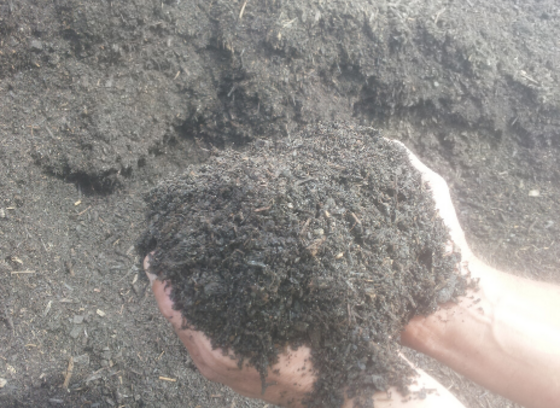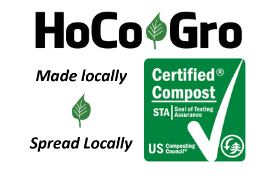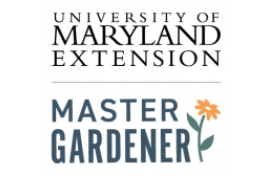About
Approximately 12% of the County's landfilled trash is yard trim. Composting is a safe, natural way to convert leaves, grass clippings, and vegetable refuse into valuable organic matter, known as humus, which is rich in nutrients. When spread in the garden, humus improves soil aeration, water retention and root penetration.
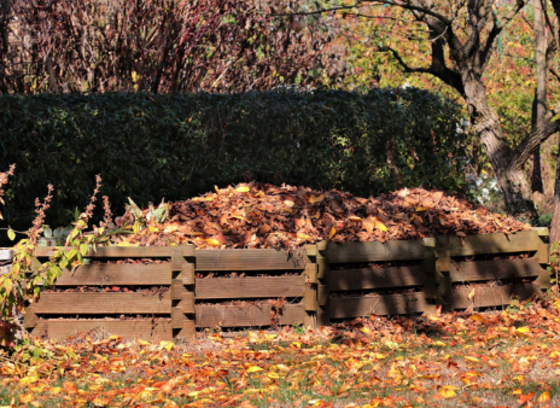
Composting is a natural decomposition process. By observing a few simple rules, anyone can be a successful composter. Microorganisms such as bacteria, fungi and protozoa digest plant tissues in the compost pile. For microbes to accomplish their work, they need enough nitrogen, oxygen and water to feed on the carbon rich plant materials provided by you, the gardener.
Compost Demonstration
Attend a compost demo for how-to advice by Howard County Master Gardeners. Feed your garden organically, recycle kitchen scraps and yard trimmings and improve your soil's health! FREE compost bins for Howard County residents.*
*Compost bins can be picked up year round at the Bureau of Environmental Services (9801 Broken Land Parkway) and Alpha Ridge Landfill (2350 Marriottsville Rd).
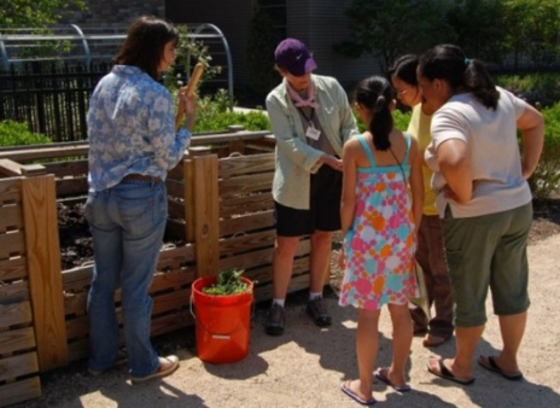
Composting is a natural decomposition process. By observing a few simple rules, anyone can be a successful composter. Microorganisms such as bacteria, fungi and protozoa digest plant tissues in the compost pile. For microbes to accomplish their work, they need enough nitrogen, oxygen and water to feed on the carbon rich plant materials provided by you, the gardener.
Select the materials to be composted. In general, leaves, grass clippings, brush and vegetable waste all work well.
Shred or chop materials to accelerate composting.
Mix layers of plant materials high in nitrogen with those high in carbon. As a rule of thumb, green materials such as grass clippings are higher in nitrogen and brown materials such as leaves are higher in carbon. By alternating layers of green and brown materials, nitrogen becomes more readily available for microbial action.
When nitrogen rich plant materials are not available, spread about a cup of 10-10-10 fertilizer with each cubic yard of compressed plant material.
Build your pile to maximum of 4 feet high by 4 feet wide. Piles higher or wider may lack the necessary oxygen to decompose quickly.
The optimal moisture content of the pile should fall between 40-60%. The compost should feel damp, but you should not be able to squeeze out any free moisture. To alleviate excess moisture, the pile can be covered to exclude rain or turned more frequently to allow it to dry. The pile should be watered during dry spells.
A free standing pile will suffice or an inexpensive enclosure can be built with wooden pallets. More substantial enclosures may be built from wood and wire mesh, or attractive prefabricated compost bins may be purchased.
Do not add meat or dairy products to your compost piles - they cause odors and attract animals. To alleviate odors caused by excessive nitrogen or water-logged compost, turn the pile frequently. After a few dry days the odors will disappear.
If your compost pile heats up properly, most disease and insect organisms will be destroyed.
Depending on the type of materials placed in the pile and the number of times it is turned or aerated, composted material should be ready to use in the garden during the next growing season.
Compost bins appropriately located in your rear yard, out of sight from the street, are acceptable in Columbia since they are not considered permanent structures. Check with your Village Office for local restrictions.
Made locally, Spread locally
We sell our products, including our HoCoGro Compost, by the cubic yard throughout the year at the Wood Waste Area at Alpha Ridge Landfill. We even have a list of contractors who will deliver the product directly to your door.
